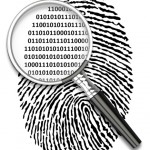I have just returned (Tuesday 4th March) from the Jersey Finance event titled – KYC/AML digital innovation – efficiency, risk reduction and client satisfaction? Although very interesting I was disappointed that there was not a recognition that some of the technology being discussed is already in use throughout the world in many AML supervised firms and in effect is being accepted by their regulators….why does our regulator “dance on the pin-head” on some subjects and not become a 21st century minded rule maker and supervisor…?
By way of examples –
Some countries are using innovative IT solutions to supplement efforts, like bio-metrics or voice prints. Such market-based solutions have been especially developed in Malawi and New Zealand where Digicel Pacific Limited, a MNO which operates across the Pacific and is part of Digicel Group (operating in the Caribbean, Central America and the Pacific) has recently introduced in New Zealand a bio-metric ID system. Countries are also developing electronic multi-purpose forms of identification.
- PR Newswire (2012), “Digicel Launches World’s First Biometric Identification System For International Money Transfers” http://prn.to/1Ek3kKR
Furthermore in the next few years, Indonesia, along with other countries in Asia, like India, China, Philippines, and Vietnam, will implement an electronic passport (e-passport) technology that uses contactless smart cards. The “Universal Electronic Card will be issued to natural persons upon request as of January 2013, and later to every citizen in Russia.
In Rwanda and Kenya, storing electronic finger prints is permitted and in both countries credit unions have piloted fingerprint identification technology for rural poor customers.
India is embarking on a project to provide every Indian resident a 12-digit bio-metric identification number, formerly called the Unique Identity Number (UID) and now called the Aadhaar number, tied to three pieces of bio-metric data (fingerprints, iris scans, and a facial picture) and limited demographic information.
Currently, many of India’s poorest citizens do not have any ID cards, bank accounts, or even addresses that they can use to obtain social services.
The Aadhaar number is intended to allow individual identification anytime, anywhere in the country through online identity verification from a central database. If successfully implemented, it would be the first bio-metrically verified unique ID implemented on a national scale and would provide the “identity infrastructure” for financial inclusion, as well as for strengthening AML/CFT implementation, delivery of social services, subsidies and other programs and national security, and anti-corruption efforts.
There are many other examples but I think these set the scene…..
It does however seem the only way is digital to keep up with the world…….




